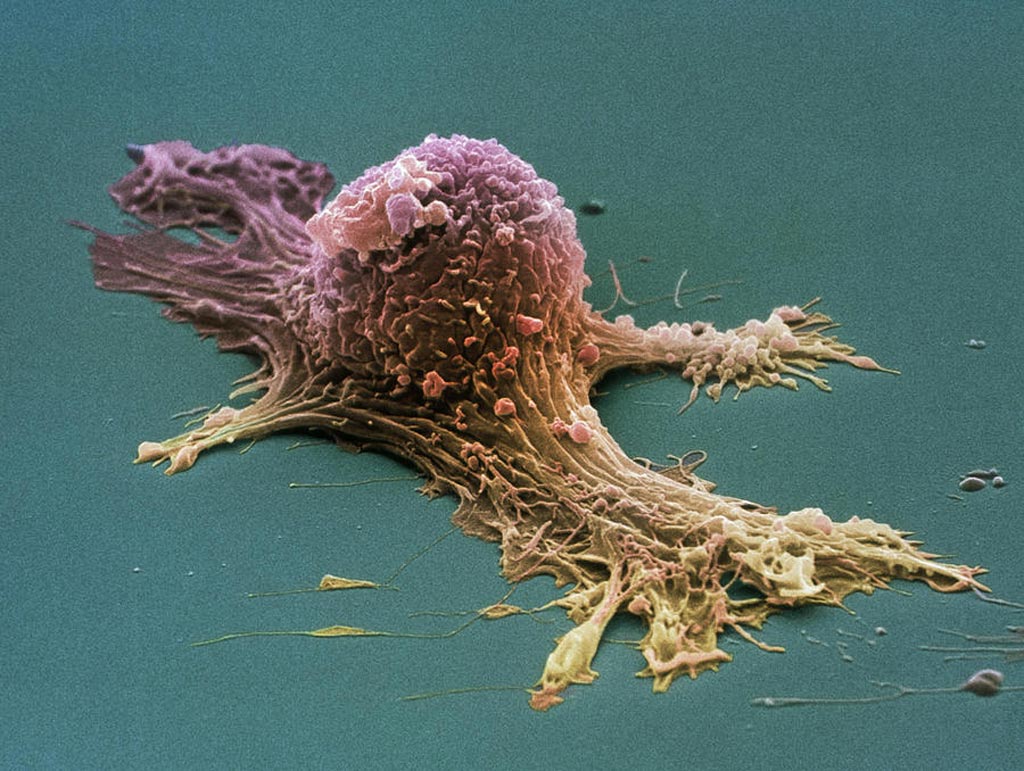Lack of Correlation in Cancer Cells May Complicate Drug Development
By LabMedica International staff writers
Posted on 07 Sep 2017
Cancer researchers have are warning drug developers that in about 62% of ovarian cancer cell samples levels of messenger RNA and protein did not accurately reflect changes in gene activity.Posted on 07 Sep 2017
High-throughput technologies have identified significant changes in patterns of mRNA expression over cancer development but the functional significance of these changes often rests upon the assumption that observed changes in levels of mRNA accurately reflect changes in levels of their encoded proteins. To test this assumption, investigators at the Georgia Institute of Technology (Atlanta, USA) examined the activity of 4,436 genes, their subsequently transcribed messenger RNA, and the resulting proteins in ovarian cancer cells donated by a single patient.

Image: A scanning electron micrograph (SEM) of an ovarian cancer cell (Photo courtesy of Steve Gschmeissner / SPL).
They reported in the August 15, 2017, online edition of the journal Scientific Reports that the overall correlation between global changes in levels of mRNA and their encoding proteins was low. The majority of differences were on the protein level with no corresponding change on the mRNA level. Indirect and direct evidence indicated that a significant fraction of the differences may have been mediated by microRNAs.
MicroRNAs (miRNAs) are a family of noncoding 19- to 25-nucleotide RNAs that regulate gene expression by targeting messenger RNAs (mRNAs) in a sequence specific manner, inducing translational repression or mRNA degradation, depending on the degree of complement between miRNAs and their targets. Many miRNAs are conserved in sequence between distantly related organisms, suggesting that these molecules participate in essential processes. In fact, miRNAs have been shown to be involved in the regulation of gene expression during development, cell proliferation, apoptosis, glucose metabolism, stress resistance, and cancer.
"A lot of mutations in cancer are mutations in production levels. The proteins are being overexpressed," said senior author Dr. John F. McDonald, professor of biological sciences at the Georgia Institute of Technology. "The messenger RNA-protein connection is important because proteins are usually the targets of gene-based cancer therapies. And drug developers typically measure messenger RNA levels thinking they will tell them what the protein levels are. The idea that any change in RNA level in cancerous development flows all the way up to the protein level could be leading to drug targeting errors. So, there are going to be many instances where if you are predicting what to give therapeutically to a patient based on RNA, your prescription could easily be incorrect. Drug developers could be aiming at targets that are not there and also not shooting for targets that are there."
Related Links:
Georgia Institute of Technology













